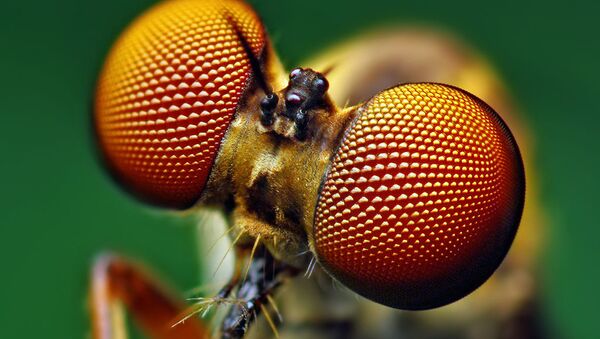The common fruit fly (Drosophila melanogaster) specimens sent to space aboard a Foton-M biosatellite in 2014 successfully mutated during their flight, adapted to weightlessness and 'stored' these mutations in their genes for future flights, Dr. Irina Ogneva, lab chief at the Institute of Cell Biophysics, has revealed.
"In 2014, we sent Drosophila melanogaster flies to space aboard a Foton-M biosatellite. The flight lasted 45 days. During the experiment, we received three successive generations of the insects. Upon their return to Earth, we divided the flies into two groups, leaving one in a laboratory, and sending the other back into space 20 days after their return, this time to the ISS," Ogneva explained.
"We discovered that once they returned to space, the flies began multiplying under weightless conditions much more productively than their counterparts left on Earth. I can tell you straight away that we did not expect such results," the scientist added.
According to Ogneva, the results were significant enough to warrant further exploration, with another party of 'cosmonaut flies' to be sent into orbit aboard the Bion-M biosatellite, which is set for launch in 2023. In the meantime, further experiments are planned aboard the ISS regarding the flies' fascinating 'genetic information storage' capabilities.

First Space Travelers
Common fruit flies were one of the first Earth-based creatures to be sent into space, and sent into the upper reaches of the atmosphere by US scientists aboard a V2 rocket in 1947 at a New Mexico test range, with the purpose of the mission being to test the effects of high-altitude cosmic radiation on the insects. In 1960, fruit lies accompanied the dogs Belka and Strelka, a rabbit, two rats, 40 mice and plants aboard the Soviet satellite Sputnik 5. The animals made it back alive, becoming the first living creatures to successfully orbit the planet and make it back home.
A number of space powers have since repeated experiments involving fruit flies, with the insects highly valued by scientists for their many genetic similarities to Homo sapiens. For example, over 75 percent of humans' disease-causing genes have a recognisable match among the genetic code of fruit flies. Furthermore, according to NASA, 50 percent of the flies' protein sequences have mammalian analogues.
Scientists have spent decades studying the creatures' reactions long periods in space, including the effects of gravity, radiation, various diseases, and genetic mutations. The International Space Station even has a special NASA 'Fruit Fly Lab-01' facility for long-duration studies of the fruit flies, who are carried to space aboard tiny 'Fly Cassette' storage devices.
Lights, camera, artificial gravity! The premiere of the @NASA Fruit Fly Lab http://t.co/3NtzQMK0Hq @NASAAmes pic.twitter.com/TirNZbhpGV
— ISS Research (@ISS_Research) 12 декабря 2014 г.



